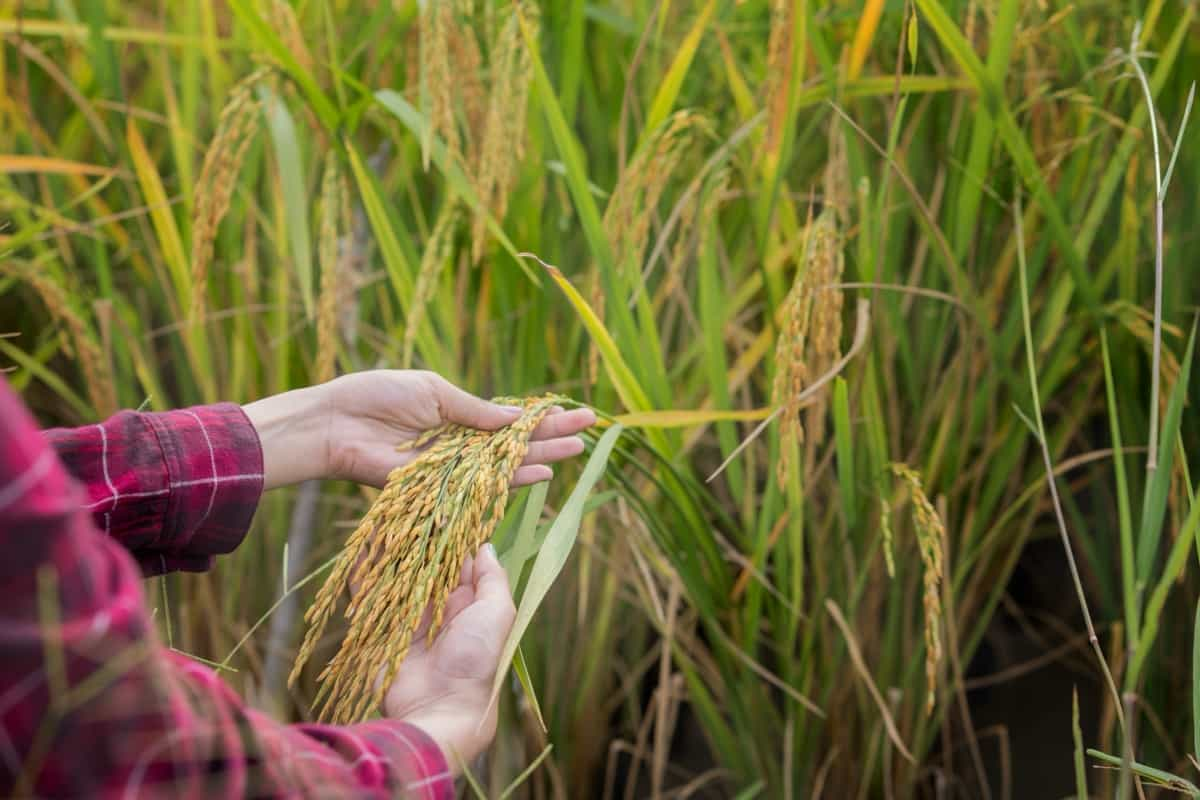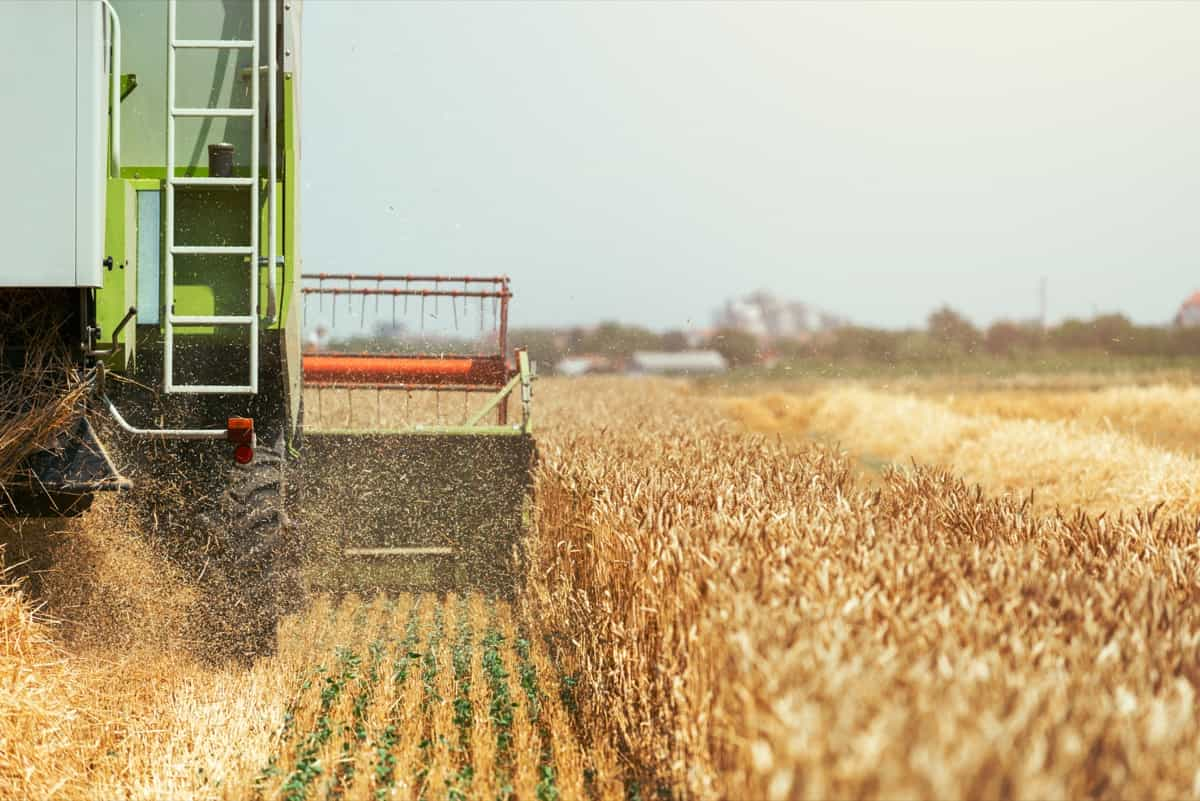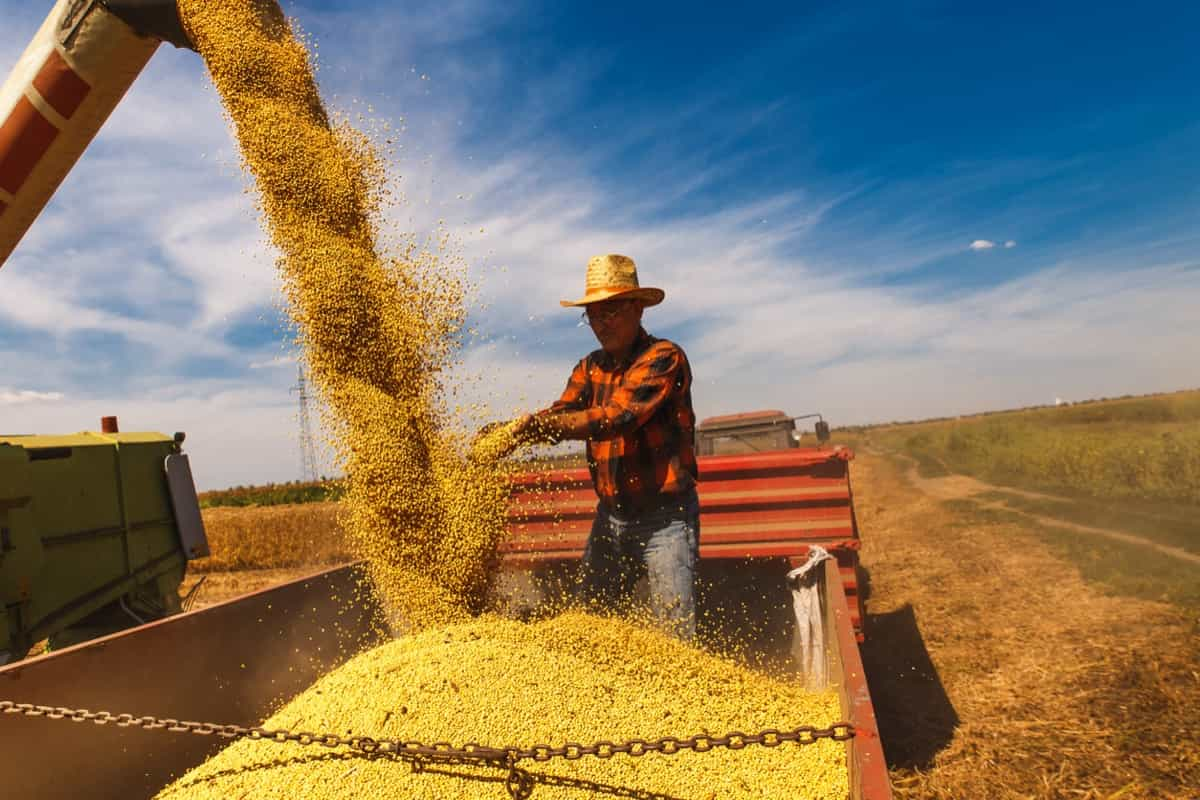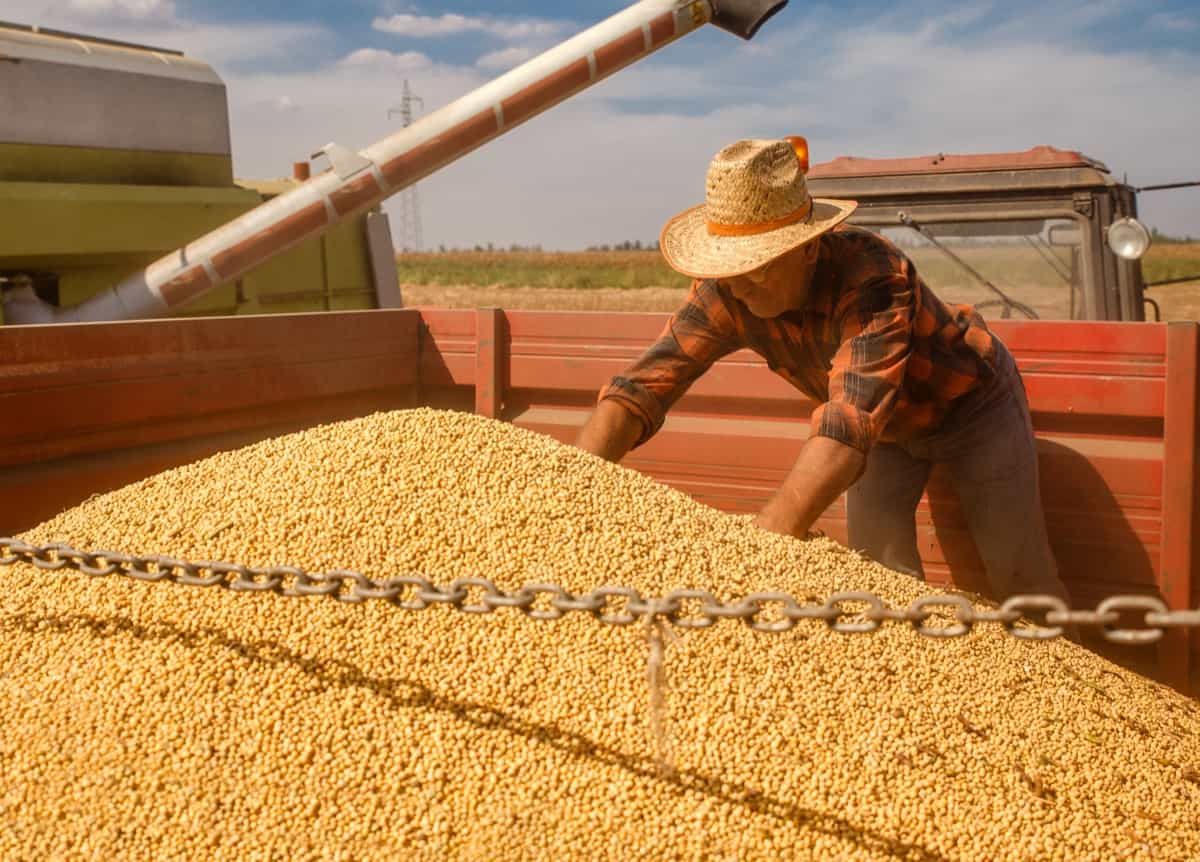In India, a land of diverse agricultural practices, crop yields per acre vary significantly across states. This variation reflects the influence of climate, soil type, irrigation facilities, and farming techniques. Our exploration delves into the state-wise yields of major crops like wheat, rice, maize, banana, and potato for the year 2022-23.

The data reveals intriguing patterns: Punjab and Haryana lead in cereal production, while West Bengal and Odisha excel in rice. This blog post aims to provide a detailed analysis of these variations, offering insights into India’s agricultural landscape.
What is Crop Yield Per Acre in India?
Crop yield per acre is a measure of how much of a crop is produced on a given area of land. It is usually expressed in kilograms or tons per hectare or acre. Numerous elements, such as soil quality, water availability, climate, pests, diseases, crop management techniques, and seed varieties, have an impact on crop yield per acre.
Crop yield per acre is an important indicator of agricultural productivity, food security in India, where half of the population mostly depends on agriculture for their livelihood. Ministry of Agriculture and Farmers Welfare, Average crop yield per acre in India for major crops in 2019-20 was as follows.
| Crop | Yield per Acre (kg) |
| Rice | 1,620 |
| Wheat | 1,430 |
| Maize | 1,890 |
| Sugarcane | 66,000 |
| Cotton | 500 |
| Soybean | 750 |
| Rapeseed | 800 |
| Groundnut | 900 |
| Potato | 10,000 |
| Onion | 8,000 |
Factors Affecting Crop Yield in India
Soil quality is a crucial factor in crop growth and nutrient supply. It can be improved through organic manures, composts, biofertilizers, green manures, crop rotation, and conservation tillage. Water availability is also a key factor affecting crop growth and development. Efficient irrigation methods, such as drip, sprinkler, or micro-irrigation, can enhance water availability. Climate, which refers to long-term patterns of temperature, precipitation, humidity, wind, and sunshine, can be modified through climate-resilient crops, crop diversification, intercropping, agroforestry, and protected cultivation.
In case you missed it: Seed Rate Per Acre in India: Exploring Seeds Per Acre for Different Crops

Pests and diseases, including insects, mites, nematodes, fungi, bacteria, viruses, and weeds, can be controlled using integrated pest management practices. Crop management practices, including land preparation, seed selection, sowing, fertilization, weed control, harvesting, and post-harvest handling, can be improved through good agricultural practices (GAP) like precision farming, digital agriculture, and farm mechanization.
Historical Trends in Crop Yield Per Acre
Crop yield per acre is a crucial indicator of a country’s agricultural efficiency and productivity, influenced by factors like soil quality, water availability, climate, pest and disease management, crop variety, fertilizer use, irrigation, and farming practices. In India, the average yield per hectare of foodgrains increased from 1,876 kg in 2015-16 to 2,156 kg in 2019-20, a 14.9% growth.
The average yield per hectare of oilseeds also increased from 1,080 kg to 1,199 kg, an 11% growth. The average yield per hectare of sugarcane increased from 70.5 tonnes to 72.8 tonnes, a 3.3% growth, and the average yield per hectare of cotton increased from 486 kg to 495 kg, a 1.9% growth. However, these figures are still lower than the global average and the potential yields that can be achieved with improved technologies and practices.
Crop-Specific Yield Analysis in India
Crop-specific yield analysis in India is a method used to estimate the potential and actual yield of different crops grown in different regions. Factors such as soil quality, fertilizer use, pest control, weather conditions, and irrigation affect crop yield. Predicting crop yield requires reliable and efficient statistical models. Dharmaraja et al. used linear regression and time-series models to predict the yield of Bajra (pearl millet) in Alwar district of Rajasthan, using data from 1980 to 2014.
Singh et al. proposed a yield prediction model for 36 crops grown in 542 districts of India using regression algorithms from 1997 to 2016. This analysis can help farmers, policymakers, and researchers make informed decisions regarding crop production, marketing, storage, trade, and assess the impact of climate change on crop yield and food security.
Government Initiatives for Improving Crop Yield
India’s government has implemented various schemes and programs to boost crop yield and agricultural productivity. Pradhan Mantri Fasal Bima Yojana (PMFBY), an insurance scheme that provides financial support to farmers in crop failure by natural calamities, pests, and diseases. The Pradhan Mantri Krishi Sinchayee Yojana (PMKSY) aims to improve water use efficiency by providing water to every field.
In case you missed it: Fertilizer Application Rate Per Acre: Exploring Different Crop Fertilizer Application Rates

The Soil Health Card Scheme (SHC) provides farmers with soil health cards with information on nutrient status and fertilizer recommendations. The National Food Security Mission provide to increase rice, wheat, pulses, and coarse cereal production through area expansion and improved agronomic practices. The National Mission for Sustainable Agriculture promotes sustainable agriculture practices like organic farming, rainfed agriculture, integrated farming systems, and climate-resilient agriculture.
Challenges Faced in Achieving High Crop Yields
Despite government and stakeholder initiatives, farmers in India need help in achieving high crop yields. These include small and fragmented land holdings, low input use of inputs like seeds, fertilizers, pesticides, and machinery, poor soil health due to overexploitation, erosion, salinization, acidification, and nutrient depletion, severe water scarcity and stress due to increasing demand, declining supply, and inefficient management, climate change and variability, and lack of market access and infrastructure.
Small and fragmented land holdings limit the scope for mechanization, irrigation, and adoption of improved technologies. Low input use affects crop growth and yield potential. Poor soil health, water scarcity, climate change, and lack of market access and infrastructure hinder post-harvest management and value addition of crops, leading to high losses, low prices, and low income for farmers. Addressing these challenges is ensuring sustainable agricultural practices and promoting sustainable growth.
Impact of Climate Change on Crop Yields
Climate change poses threat to agriculture in the 21st century, with significant impacts on crop yields in India. Factors such as temperature rise, rainfall variability, carbon dioxide concentration, and rising sea levels can affect crop phenology, physiology, biochemistry, and growth stages. Temperature rise can reduce growth duration, increase evapotranspiration, alter photosynthesis and respiration processes, and affect pollen viability and grain filling. Rainfall variability can also cause droughts or floods, damaging crops and reducing yield potential.
Carbon dioxide concentration can enhance photosynthesis and water use efficiency but reduce nitrogen fixation and protein content. The rise in sea level can affect coastal agriculture by causing salinity intrusion, erosion, inundation, and submergence of land, as well as affecting freshwater resources for irrigation. A study by the Indian Agricultural Research Institute predicts that climate change could reduce rice yield by 4-6%, wheat by 6-23%, maize by 18-23%, and sorghum by 2-14% by 2050 in India.
Comparison of Crop Yields Across Different States in India
| Crop | Punjab | Haryana | Maharashtra | Madhya Pradesh | Karnataka | Kerala | Uttar Pradesh | Bihar | West Bengal | Odisha |
| Wheat | 4,500 | 4,200 | 2,800 | 3,000 | 2,500 | 2,000 | 3,200 | 2,700 | 2,600 | 2,400 |
| Rice | 6,000 | 5,500 | 3,500 | 4,000 | 3,800 | 4,500 | 5,000 | 4,800 | 5,200 | 4,700 |
| Maize | 5,000 | 4,800 | 3,000 | 3,500 | 3,200 | 2,800 | 3,800 | 3,400 | 3,300 | 3,100 |
| Banana | 25,000 | 22,000 | 18,000 | 20,000 | 19,000 | 23,000 | 21,000 | 19,500 | 20,500 | 18,500 |
| Potato | 15,000 | 14,000 | 12,000 | 13,000 | 11,500 | 13,500 | 14,500 | 13,500 | 14,500 | 12,500 |
In case you missed it: Cost of Farming Per Acre in India: Calculator for State-wise Cultivation Input Cost Per Acre

Innovative Farming Techniques for Increasing Crop Yields
Innovative farming techniques, like precision agriculture, vertical farming, biofortification, and genetic engineering, can increase crop yields by optimizing crop growth, soil health, water use, pest and disease management, and reducing crop losses. Precision agriculture uses sensors, drones, satellites, and artificial intelligence to monitor and optimize crop growth, while vertical farming uses hydroponics or aeroponics systems to deliver nutrients and water to plants.
Biofortification breeds crops to enhance their nutritional value, improving human health and reducing malnutrition. Genetic engineering modifies crop genes to improve traits like drought resistance, pest resistance, yield, quality, and shelf life, reducing crop losses and increasing food security.
Role of Technology in Enhancing Crop Yields
Technology significantly enhances crop yields by providing farmers with accurate information about weather forecasts, market prices, and government schemes through mobile apps, SMS services, and radio programs. It also allows access to quality seeds, fertilizers, pesticides, and machinery through online platforms and digital payments.
It also improves irrigation efficiency and water management through drip and sprinkler systems, facilitates post-harvest management through cold storage and food preservation techniques, and promotes knowledge sharing among farmers through online courses and social media groups.
Economic Implications of Varied Crop Yields
- Higher crop yields can increase farm incomes, reduce poverty, improve the livelihoods of millions of farmers in India.
- Higher crop yields can also lower food prices, increase food availability, and enhance food security for millions of consumers in India.
- Higher crop yields can boost agricultural growth, contribute to GDP, and generate employment opportunities in rural and urban areas.
- Lower crop yields can reduce farm incomes, increase indebtedness, and worsen distress among farmers in India.
- Lower crop yields can also raise food prices, reduce food availability, and worsen food insecurity among consumers in India.
- Lower crop yields can hamper agricultural growth, affect GDP, and create unemployment problems in rural and urban areas.
In case you missed it: Cost of Cultivation of Potato Per Acre in India: Exploring from Seed Costs to Market Charges

Sustainable Practices for Maximizing Crop Yields
- Adopting organic farming methods that use natural inputs such as compost, vermicompost, biofertilizers, and biopesticides to enhance soil fertility and crop health.
- Practicing integrated pest management (IPM) that combines biological, cultural, mechanical, and chemical methods to control pests and diseases without harming beneficial organisms and biodiversity.
- Implementing climate-smart agriculture (CSA) that adapts to the changing climate conditions by using drought-tolerant, heat-tolerant, and flood-tolerant crop varieties, conserving soil and water resources, and reducing greenhouse gas emissions.
- Diversifying cropping systems by growing different crops in rotation or intercropping to reduce pest and disease incidence, improve soil health, and increase income stability.
- Enhancing crop resilience by using crop insurance schemes, weather-based advisories, and early warning systems to cope with weather uncertainties and natural disasters.
Future Projections for Crop Yields in India
- Rice: The projected yield for 2050 is 3.8 tonnes per hectare (t/ha), which is 52% higher than the current yield of 2.5 t/ha. The projected yield gap (the difference between potential and actual yield) is 1.6 t/ha, which is 30% of the potential yield of 5.4 t/ha.
- Wheat: The projected yield for 2050 is 4.1 t/ha, which is 37% higher than the current yield of 3 t/ha. The projected yield gap is 1.7 t/ha, which is 29% of the potential yield of 5.8 t/ha.
- Maize: The projected yield for 2050 is 4.3 t/ha, which is 54% higher than the current yield of 2.8 t/ha. The projected yield gap is 2.1 t/ha, which is 33% of the potential yield of 6.4 t/ha.
- Climate change: The projected increase in temperature and rainfall variability can affect crop growth, development, and quality, as well as increase pest and disease pressure.
- Technology adoption: The adoption of improved seeds, fertilizers, pesticides, irrigation, machinery, and digital tools can enhance crop productivity, efficiency, and profitability.
- Policy support: The provision of subsidies, incentives, credit, insurance, extension, and market linkages can facilitate farm input access, output marketing, risk management, and income generation.
In case you missed it: High-Density Kiwi Plantation: Spacing, Plants Per Acre, Techniques, Cost, and Yield

Conclusion
Examining state-wise crop yields in India reveals significant variations, with factors such as climate, soil quality, and agricultural practices playing pivotal roles. Understanding these disparities is crucial for policymakers and farmers to enhance agricultural productivity, food security across the nation.
- Crop Yield Per Acre in India: Exploring State-wise Different Crop Yields
- Sustainable Living: The Growing Trend of Urban Apartment Gardening in India
- Everything You Need to Know about MSRI in Paddy for High Yields: Mechanized System of Rice Intensification
- Best Fertilizers to Increase Crop Yield: Boost the Yields of Vegetables, Fruits, Flowers, and Other Crops
- Pruning Schedule for Trees: Trimming Calnder for Different Plants and Trees
- Seed Rate Per Acre in India: Exploring Seeds Per Acre for Different Crops
- Fertilizer Application Rate Per Acre: Exploring Different Crop Fertilizer Application Rates
- Farm Income Per Acre in India: Exploring State-wise Farmer’s Income for 1-acre Cultivation
- Beekeeping in the Philippines: Exploring Apiculture Industry in the Philippines
- How to Grow Fairy Castle Cactus Plants: Exploring Propagation, Planting, and Care
- Pepino Melon Farming: Exploring Business Plan to Grow and Market
- Pest Management in Paddy at Panicle Initiation Stage: Best Pest Control Strategies
- 18 Ways to Build Your Own Trellis: Types of Plant Supports, Unique and Cheap Trellis Ideas
- Everything You Want to Know About Wandering Jew Plant: Propagation, Growing, and Caring
- Jowar Farming in Rabi Season: Cultivation Practices, Varieties, and Yield
- New Paddy Varieties in India: High-Yielding, Disease-Resistant, and Aromatic Rice Cultivars
- Cost of Farming Per Acre in India: Calculator for State-wise Cultivation Input Cost Per Acre
- Cost of Cultivation of Potato Per Acre in India: Exploring from Seed Costs to Market Charges
- The Growing Trend of Urban Terrace Gardening in India for Healthy Living and Sustainability
- Precision Farming Technologies for Weed Management
- Weed Management in Onion Farms: Control with Organic, Mechanical, Biological, and Herbicides
- Black Gram and Green Gram Varieties for Kharif and Rabi Seasons
- Zero Tillage Maize Cultivation: Economic Viability, Government Policies and Support
- How to Open a Goshala in India: Legal Requirements and Procedure to Starting a Goshala Project
- Everything You Need to Know About Punganuru Cows: Origin, Characteristics, Temperament, and Breeding
- 14 Best Tractor Mounted Combine Harvesters in India: Top List With Price Included
- 14 Best Tractor Mounted Reaper Binders in India: Top List With Price Included
- 10 Best Tractor Mounted Hedge Cutters in India: Top Small Tractor-Mounted Hedge Trimmers
- How to Earn Good Profits with Gulkhaira Cultivation: High-Yield Medicinal Plant
- Cultivating Plants in Recycled Plastic Bottles and Containers: New Art of Sustainable Gardening Practices
- Maximizing Health and Productivity with Precision Nutrition Strategies for Poultry Farming
- Implementing Technology in Cattle Farming: Automation and Digital Solutions
- How to Control Pests and Diseases in Mushrooms: Best Way to Manage with Natural and Organic Remedies
- Leaf Spot Management in Plants: Causes, Symptoms, and How to Treat With Natural and Organic Remedies
- How to Control Common Plant Fungal Diseases: Homemade Natural and Organic Remedies for Fungal Diseases
- How to Control Common Plant Pests: Homemade Natural and Organic Remedies to Prevent Plant Bugs





![[Toyota Times] From Strengthening Foundations to Boosting Productivity – Toyota Focuses on Break-Even Volume [Toyota Times] From Strengthening Foundations to Boosting Productivity - Toyota Focuses on Break-Even Volume](https://businessfortnight.com/wp-content/uploads/2025/11/Toyota-Times-From-Strengthening-Foundations-to-Boosting-Productivity-Toyota-218x150.jpg)




























